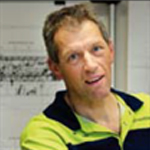Main features:
CO2 Emissions saved (tCO2)
Total savings per year: 4,500 ton lower CO2 footprint (being 3% of our total emission) in 2018 and further reduction to 6,400 ton lower CO2 footprint (being 4% of our total emission) in 2020
Smurfit Kappa Roermond Papier runs three paper machines to produce recycled paper for corrugated packaging: two large machines (PM1 & PM3) and one small one (PM2).
In a conventional configuration the steam systems are optimised for each machine. As PM2 uses lower steam pressures, similar to the residual pressures at PM1 & PM3, the project aimed to feed that steam to PM2, saving natural gas and reducing CO2.
In the old configuration the residual steam of paper machines PM1 & PM3 was only partially reused via thermo-compressors; the energy of the excess steam, with low temperature and pressure, was converted into condensate. PM2 has no excess steam because all the steam can be fully used in this machine due to a cascade steam system (lowest steam pressure 0.5 bar). After drying, only condensate leaves this machine; all condensate is sent back to our power plant and turned into steam again in a boiler. With this configuration the steam systems are optimised for each paper machine, not as a single total mill system.
In the new configuration we have fully integrated the steam systems of all three paper machines, with the excess steam from PM1 & PM3 reused in PM2. Our smallest paper machine needs less fresh steam to dry the paper web, meaning less natural gas consumption in the steam boiler, which reduces the mill’s CO2 emissions.
Decarbonisation of our heat supply is essential for the future of the mill: reducing, re-using, increasing efficiency and increasing non-fossil fuels are the main energy challenges. By re-using residual heat from the two large machines in the small machine, we need less fresh steam and therefore less natural gas.
Thus far the project has been carried out in two steps: first, residual heat from PM1 was sent to PM2. Based on this experience PM3 now also delivers residual heat to PM2. These two steps resulted in a 3,000 tonne reduction in the CO2 footprint in 2017. We are still optimizing the system to save even more natural gas, and expect an additional 3,400 tonne reduction in annual CO2 emissions resulting in a total of 6,400 CO2 reduction per year as from 2020. So although within the European paper industry we are already the benchmark regarding specific energy consumption for the recycled papers we produce, we are finding ways to reduce our consumption even more and contribute to a low(er) carbon society.

Wim Janssen
Production technologist
We consider sustainability to be a key driver for innovation, and we believe new ideas come from collaboration, creativity and an open mind. What started as a pilot project resulted in an innovative way of optimising the total mill steam system. This may sound like an easy solution, but we produce paper with different weights at different machine speeds, with maintenance stops and paper breaks. We constantly need different steam quantities.
The volume, temperature and pressure of the residual steam vary continuously, which makes re-using it very complex. To guarantee a stable production process, we had to design and implement a sophisticated control system. Looking at the results, it has more than paid off.
Main features:
CO2 Emissions saved (tCO2)
Total savings per year: 4,500 ton lower CO2 footprint (being 3% of our total emission) in 2018 and further reduction to 6,400 ton lower CO2 footprint (being 4% of our total emission) in 2020